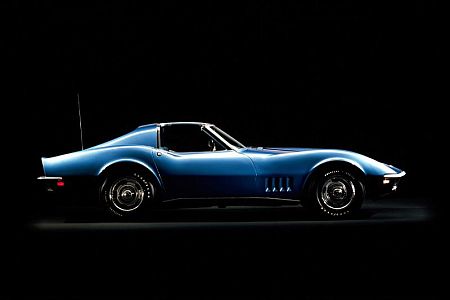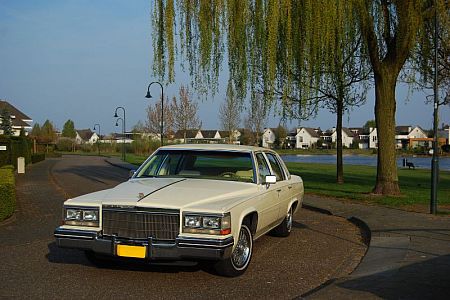British Leyland Mini
The Mini is truly irresistible. From 1959, BMC, or British Motor Corporation, had a real hit on its hands with this little car, which effortlessly weathered even the turbulent periods under British Leyland and (Austin) Rover, until the year 2000. Its charms still continue to appeal to entire populations worldwide, despite the model having some quirks that need to be taken into account. Let's take a closer look at the third and fourth generations, or Mk III and Mk IV.

Introduction of the Mini
Let's focus for a moment on the 1970s, when British Leyland introduced several models that would be criticised immediately or later, mainly for poor quality. As a result, this car manufacturer struggled to stay afloat under government supervision.
However, one model remained untouchable: the Mini. Sir Alec Issigonis' design genius was far from exhausted, and in 1971 sales even reached a peak that was never equalled thereafter. In this story, we limit ourselves to the year 1969, when the Mk III was introduced, and we end at the replacement of the Mk IV by the Mk V in 1984.
Mini Clubman and 1275 GT
The continued success of the Mini pleased BMC, but profits per car were disappointing. This became particularly noticeable with the more expensive variants, such as the Cooper and Cooper S, as well as the Riley Elf and Wolseley Hornet, with their attached rear end.
A way was sought to more cost-effectively serve the higher end within the Mini size range. This resulted in 1969 in the introduction of the Clubman, a version with an extended front end in the style of the newly released Austin Maxi. The model offered more complete equipment and, much to the satisfaction of many, a dashboard with clocks directly behind the steering wheel. This significantly improved legibility compared to the centrally positioned instrument panel.
From the Clubman also came a variant that succeeded the Cooper: the 1275 GT. However, it had to outperform the Cooper S, which was discontinued in 1971 because the manufacturer considered paying royalties to the namesake a waste.
Multiple changes
More changes took place in 1969. The Clubman nose was now also applied to the Estate, and rotating windows were installed on all models except the Van and Pick-up instead of side-sliding ones. In addition, the door hinges were moved from the outside to the inside of the front wings.
Mini 850 & 1000
BMC's management began to get fed up with the badge engineering applied earlier, with all the complexities of logistics and marketing. Henceforth, the little sprout no longer distinguished between an Austin and a Morris, but all models were simply called Mini, followed by the designations 850, 1000, and so on.

Renewed Mini Clubman
In 1975, the Clubman was fitted with an 1100 engine, which also became available for the new Special with a round nose. This engine required little effort, which had a positive effect on noise levels.
Leyland Mini 1000 a.k.a. Mark IV
The following year brought only minor changes and we have been referring to it as the Mark IV ever since.

Competition from the Austin Metro
But more important was the year 1980. The 850 disappeared and the 1000 got a new engine, possibly available with an automatic transmission. Meanwhile, the Clubman and 1275 GT disappeared with the introduction of the Austin Metro. As a budget car, the Mini persisted as long as the public remained interested.
Of course, it faced competition from the Metro in the UK, but it eventually managed to rise above this, thanks in part to the 1989 revival of the Cooper. As mentioned earlier, we focus on the period up to 1984, when the Mk V appeared with disc brakes on the front axle.
It is too extensive to mention all the special editions here, but many will remember the luxury Mayfair and the Red Hot and Jet Black action models of the 1980s.
What should you look out for when buying a Mini?
The number of Mini specialists in the Netherlands shows how popular this timeless Brit is still. Really good ones - and that is something different from how they are often touted in advertisements - can fetch considerable sums of money.
While cheaper offers do come along, thoroughly examining such cars for defects and especially rust is essential. Because Minis have a knack for rusting, no matter how small.
If welding is your favourite leisure activity, feel free to embark on a project, but outsourcing the work is not highly recommended. What you perceive to be misery is usually just the tip of the iceberg. As a result, many sellers do not even realise how disappointing the offered property can be for the new owner. Be warned!
Inexpensive to run
There is not much difference in popularity between a regular Mini and a Clubman. Some find the latter less authentic, while others appreciate it for its special and tough look, and/or like to use the extra engine space to do tuning.
When it comes to tuning, the possibilities are almost endless. If you are interested in regularly visiting foreign events with a Mini, or if you see it as a second family car, opt for the handy Estate with a more spacious interior and a fold-down rear seat.

For any Mini, don't expect too much comfort, but all the more agility and handling. This quirky Englishman proves affordable in daily use, so with a well-maintained one you will have a lot of fun.




